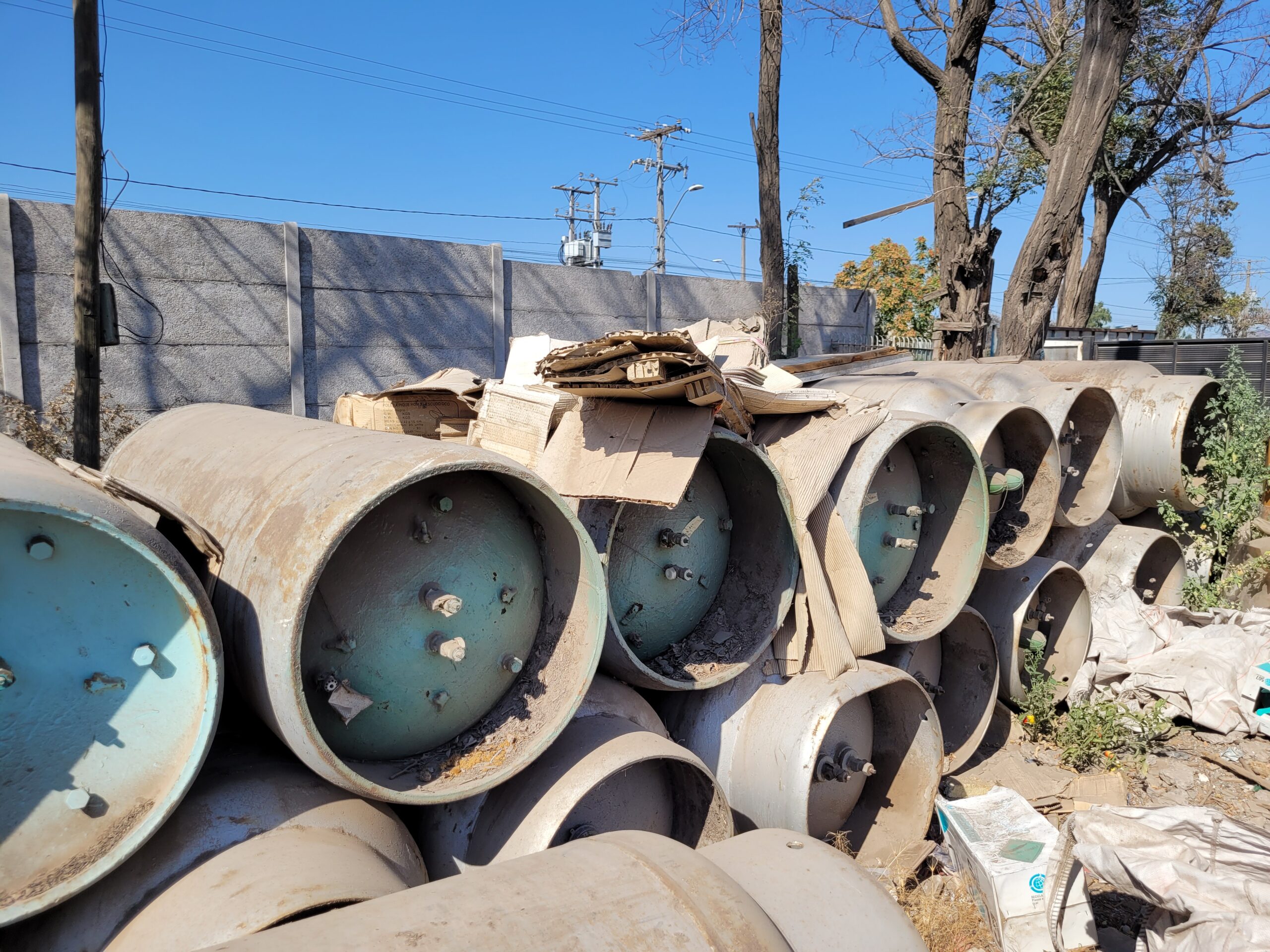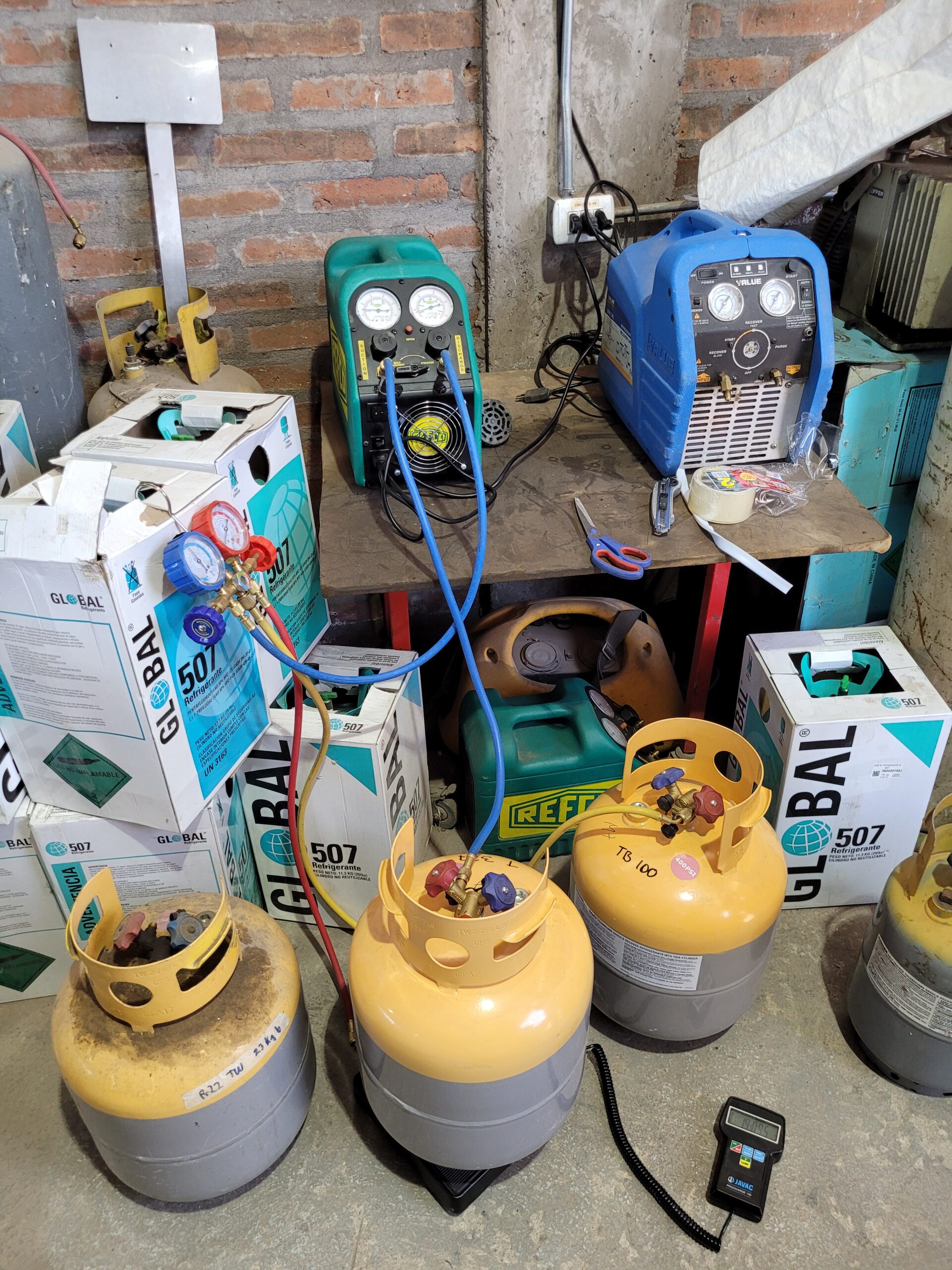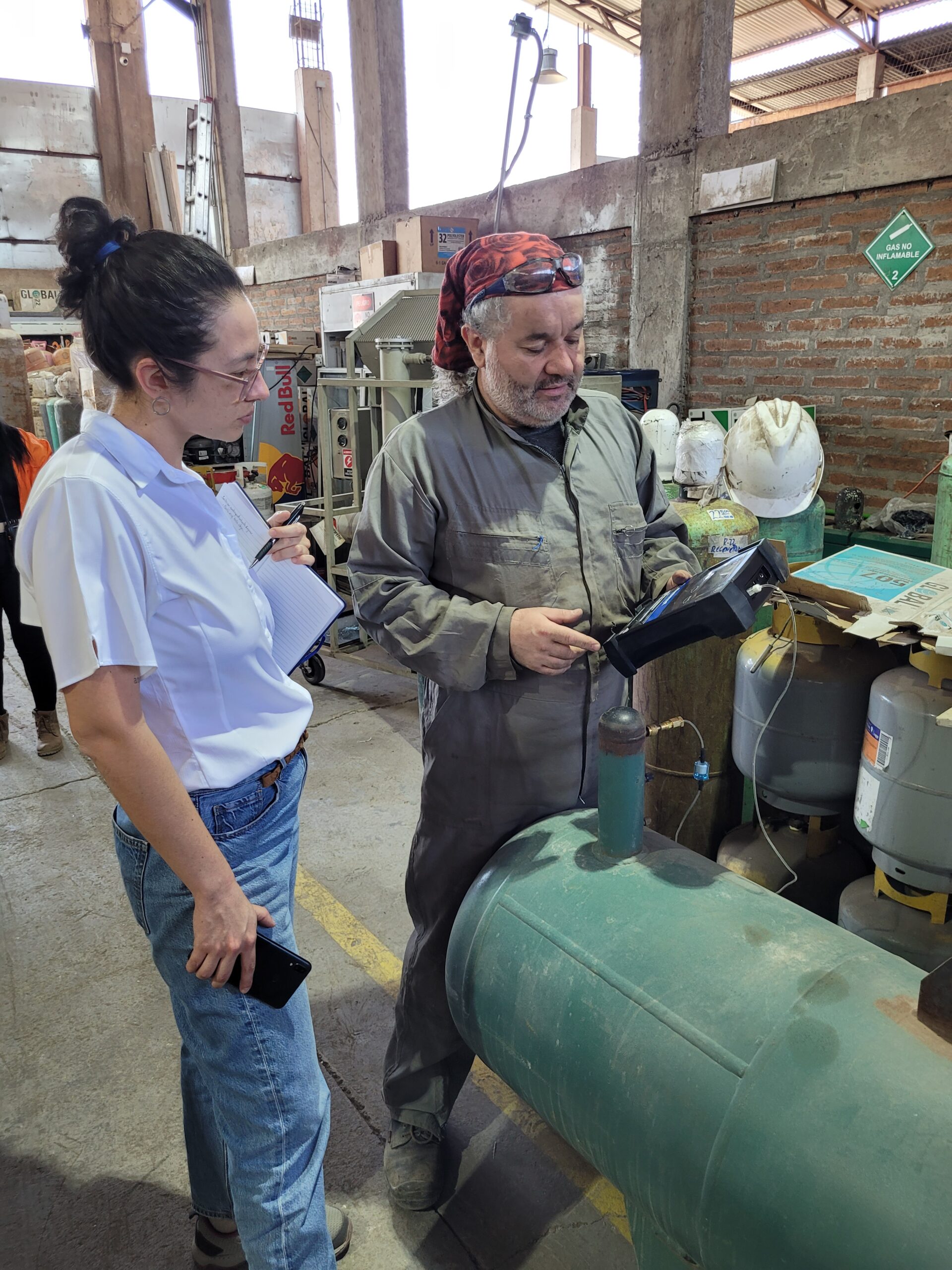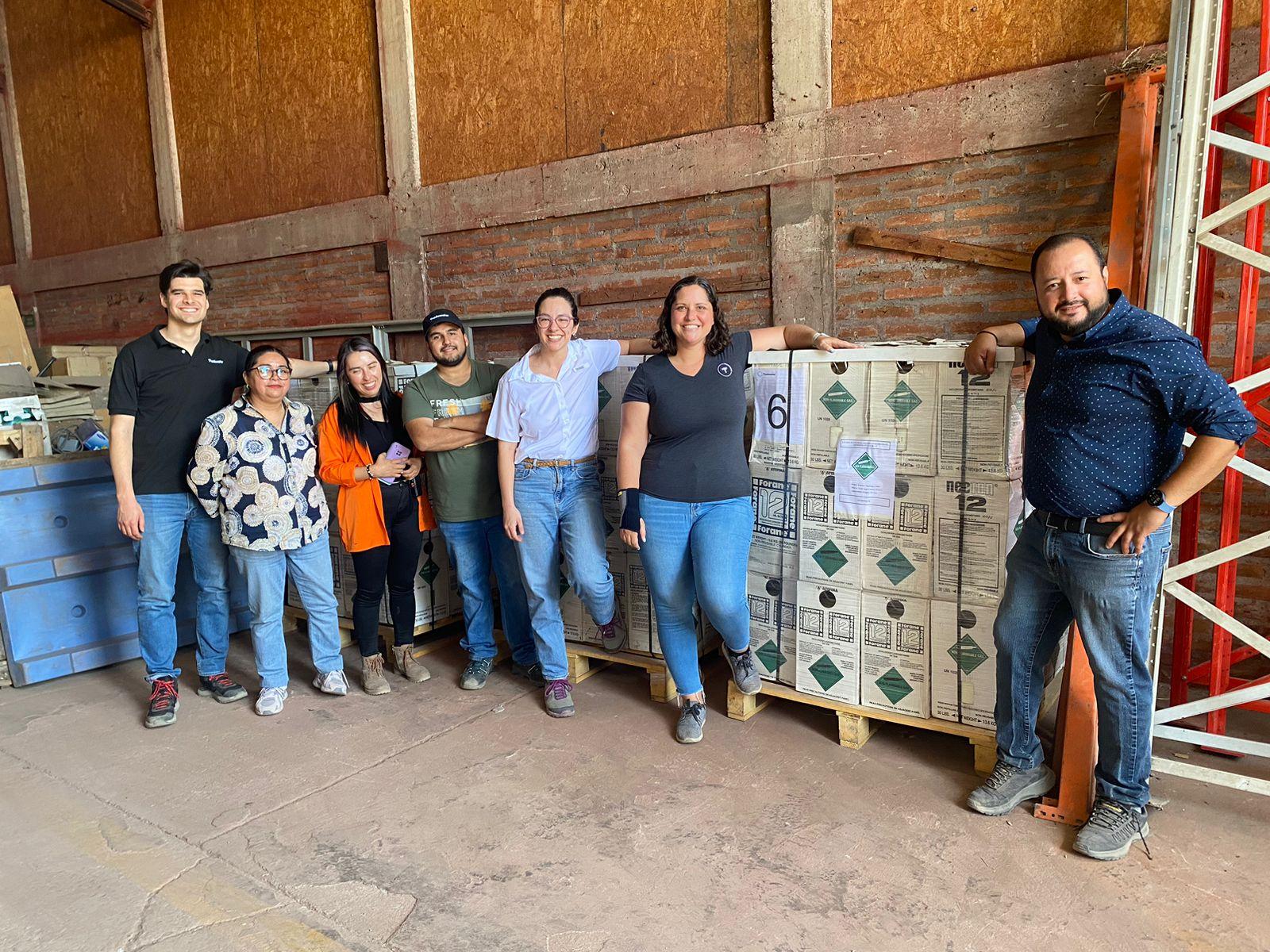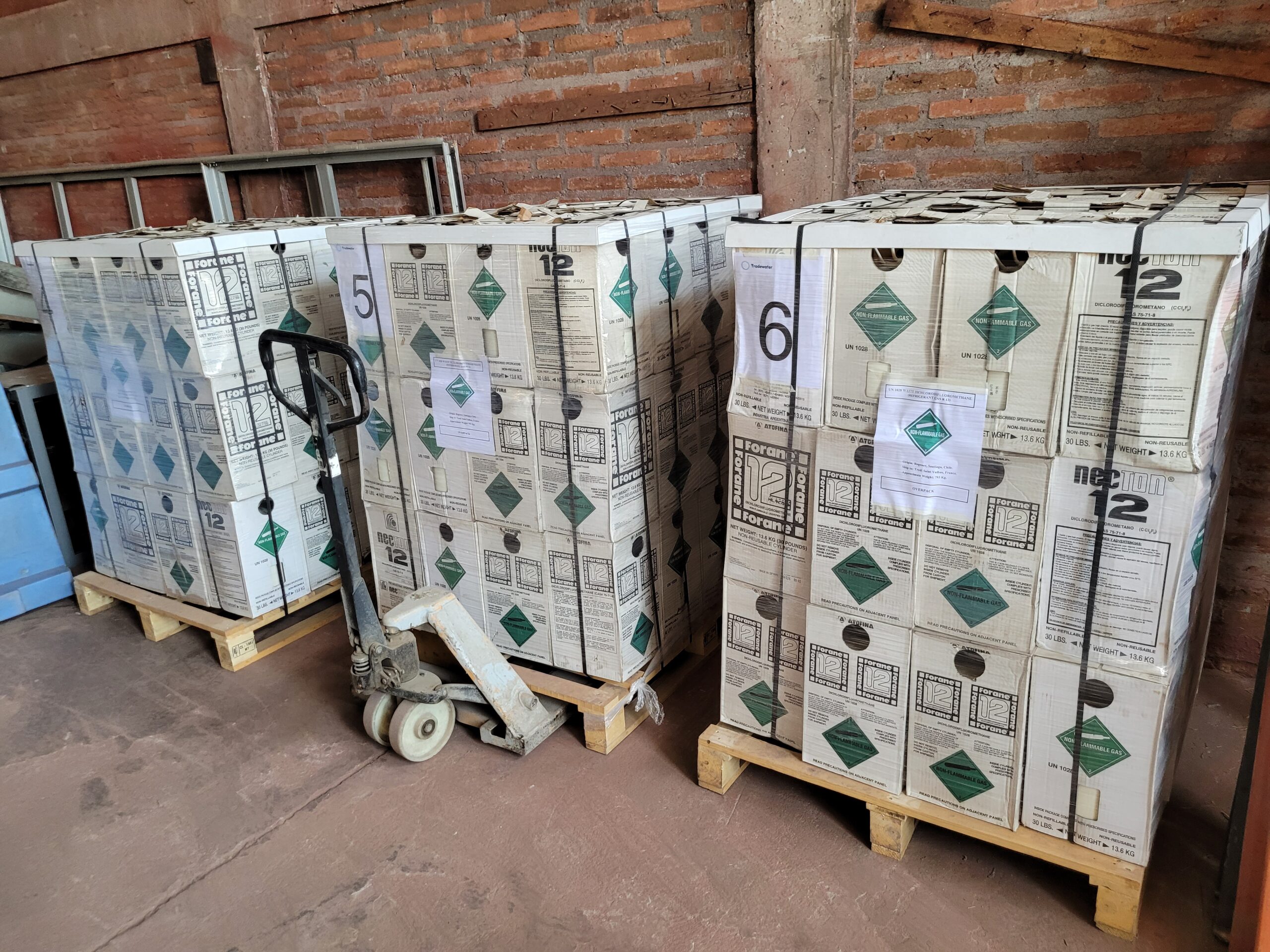Tradewater collects and destroys ODS around the world. For this group of projects, ODS is collected from Chile and destroyed in France.
All ODS refrigerant in this project was sourced either through recovery from units such as decommissioned building chillers, or from disposable cylinders or drums containing virgin material. In the case of recoveries, the material was previously recovered by another party. Under business-as-usual, the refrigerant would either remain in storage until use (in the case of stockpiles) or used in chiller systems still utilizing older refrigerants, like R-11. In either case, the ODS will eventually vent, either through leakage resulting from corrosion of the storage container or through inefficiencies, breakdowns, or mishandling of equipment. The refrigerants included in this project were no longer needed for use, and their risk of venting is thereby mitigated by destruction at an eligible destruction facility in Saint-Vulbas, France.
Every container of ODS that Tradewater destroys is weighed by a third-party using regularly calibrated scales. The ODS is then sampled by a third-party and analyzed by an accredited refrigerant laboratory to determine its species and purity. These two steps combine to ensure that credits are issued only for the precise volume and type of refrigerant destroyed.
The destruction facility that Tradewater uses destroys over 99.99% of the ODS. All the refrigerant collected is destroyed in highly regulated incinerators with continuous monitoring equipment to ensure that it meets strict international, federal, and local environmental regulations. The most important of these regulations is a requirement that at least 99.99% of the refrigerant is destroyed permanently. The other .01% includes by-products that are relatively inert and low-impact—such as carbon monoxide.
Tradewater accounts for the project emissions created during the collection, transport, and destruction of ODS – including emissions from the collection and aggregation of ozone-destroying substances (ODS), transportation of the ODS to the destruction facility, emissions at the destruction facility itself, and emissions of substitute refrigerants that will replace the destroyed refrigerants – and the number of offsets is reduced by a corresponding amount.
The amount of ODS destroyed is converted to a CO2-equivalent based on the global warming potential (GWP) and volume of the different ODS. The destruction facility supplies over 600,000 tons of steam for chemical manufacturers seeking low-carbon energy, meaning the project also supports the development of high-value-added solutions for the energy and environmental transition.
Tradewater publishes this information in the documentation for all its ODS destruction projects in a Certificate of Destruction.
